2,6-Difluorophenylboronic acid
- CAS NO.:162101-25-9
- Empirical Formula: C6H5BF2O2
- Molecular Weight: 157.91
- MDL number: MFCD00792436
- EINECS: 627-874-1
- SAFETY DATA SHEET (SDS)
- Update Date: 2025-07-24 18:13:42
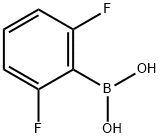
What is 2,6-Difluorophenylboronic acid?
Chemical properties
White to off-white crystalline powder
The Uses of 2,6-Difluorophenylboronic acid
2,6-Difluorophenylboronic acid can be used:
- As a substrate in the model reaction of Suzuki–Miyaura coupling with?4-chloro-3-methylanisole.
- To prepare 4-bromo-2,3′,5′,6-tetrafluorobiphenyl, a key intermediate for the synthesis of 2,6-difluorinated oligophenyls applicable in organic semiconductors.
- To prepare ethyl 4-(2,6-difluorophenyl)nicotinate, a key intermediate for the synthesis of 4-phenyl pyridine based potent TGR5 agonists.
The Uses of 2,6-Difluorophenylboronic acid
Intermediates of Liquid Crystals
The Uses of 2,6-Difluorophenylboronic acid
suzuki reaction
Properties of 2,6-Difluorophenylboronic acid
| Melting point: | 147-149 °C (lit.) |
| Boiling point: | 260.1±50.0 °C(Predicted) |
| Density | 1.35±0.1 g/cm3(Predicted) |
| storage temp. | Keep in dark place,Sealed in dry,Room Temperature |
| solubility | Soluble in methanol. |
| form | solid |
| pka | 8.12±0.58(Predicted) |
| color | White to Almost white |
| BRN | 8545931 |
| CAS DataBase Reference | 162101-25-9(CAS DataBase Reference) |
Safety information for 2,6-Difluorophenylboronic acid
| Signal word | Warning |
| Pictogram(s) |
 Exclamation Mark Irritant GHS07 |
| GHS Hazard Statements |
H315:Skin corrosion/irritation H319:Serious eye damage/eye irritation H335:Specific target organ toxicity, single exposure;Respiratory tract irritation |
| Precautionary Statement Codes |
P261:Avoid breathing dust/fume/gas/mist/vapours/spray. P264:Wash hands thoroughly after handling. P264:Wash skin thouroughly after handling. P271:Use only outdoors or in a well-ventilated area. P280:Wear protective gloves/protective clothing/eye protection/face protection. P302+P352:IF ON SKIN: wash with plenty of soap and water. P305+P351+P338:IF IN EYES: Rinse cautiously with water for several minutes. Remove contact lenses, if present and easy to do. Continuerinsing. |
Computed Descriptors for 2,6-Difluorophenylboronic acid
| InChIKey | DBZAICSEFBVFHL-UHFFFAOYSA-N |
2,6-Difluorophenylboronic acid manufacturer
New Products
4,4-Difluoropiperidine hydrochloride tert-butyl 9-methoxy-3-azaspiro[5.5]undecane-3-carboxylate Indole Methyl Resin N-Isopropylurea N,N-Dicyclohexylcarbodiimide(DCC) MELDRUMS ACID 5-METHYLISOXAZOLE-4-CARBOXYLIC ACID Magnessium Bis glycinate Zinc ascorbate 1-bromo-2-butyne 2-acetamidophenol 9(10H)-anthracenone Erythrosin B, 4-Piperidinopiperidine 2-((4-morpholinophenylamino) (methylthio) methylene) malononitrile 2,4-dihydroxybenzaldehyde 3-(4-morpholinophenylamino)-5-amino-1H-pyrazole-4-carbonitrile Methyl 2-methylquinoline-6-carboxylate 2,6-dichloro-4-nitropyridine 4-Bromo-2-chlorobenzonitrile 2-(benzylamino)acetic acid hydrochloride 4-(tert-Butoxycarbonylamino)but- 2-ynoic acid 3,4-dihydro-2H-benzo[b][1,4]dioxepine 1-Phenyl-1-cycloprppanecarboxylicacidRelated products of tetrahydrofuran
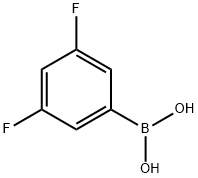
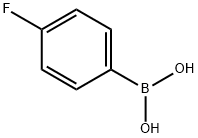

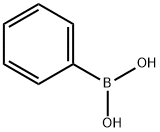
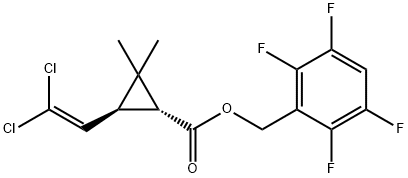
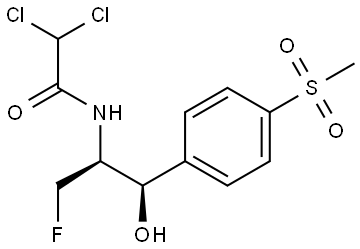

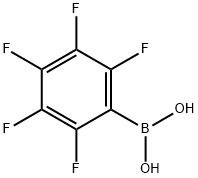
You may like
-
 2,6-Difluorophenylboronic Acid (contains varying amounts of Anhydride) CAS 162101-25-9View Details
2,6-Difluorophenylboronic Acid (contains varying amounts of Anhydride) CAS 162101-25-9View Details
162101-25-9 -
 2,6-Difluorophenylboronic acid CAS 162101-25-9View Details
2,6-Difluorophenylboronic acid CAS 162101-25-9View Details
162101-25-9 -
 162101-25- 9 98%View Details
162101-25- 9 98%View Details
162101-25- 9 -
 2,6-difluorophenylboronicacid 162101-25-9 98%View Details
2,6-difluorophenylboronicacid 162101-25-9 98%View Details
162101-25-9 -
 3-(4-amino-1-oxoisoindolin-2-yl)-1-methylpiperidine-2,6-dione 98%View Details
3-(4-amino-1-oxoisoindolin-2-yl)-1-methylpiperidine-2,6-dione 98%View Details -
 20677-73-0 (2,2-diethoxyethyl)methylamine 98%View Details
20677-73-0 (2,2-diethoxyethyl)methylamine 98%View Details
20677-73-0 -
 3-(4-(hydroxyamino)-1-oxoisoindolin-2-yl)piperidine-2,6-dione 98%View Details
3-(4-(hydroxyamino)-1-oxoisoindolin-2-yl)piperidine-2,6-dione 98%View Details -
 57381-49-4 2-bromo-4-chlorobenzonitrile 98%View Details
57381-49-4 2-bromo-4-chlorobenzonitrile 98%View Details
57381-49-4
Statement: All products displayed on this website are only used for non medical purposes such as industrial applications or scientific research, and cannot be used for clinical diagnosis or treatment of humans or animals. They are not medicinal or edible.
